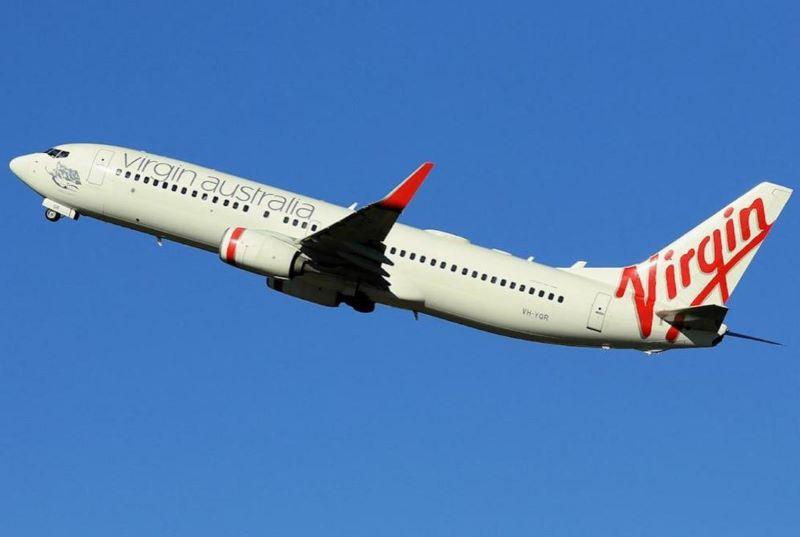
Virgin Australia Boeing 737-800
Third-party training inconsistent with Boeing’s recommendations and Virgin Australia’s adopted procedures contributed to several hard landings due to pilot confusion and the related hazards introduced by the instructions, an Australian Transport Safety Bureau (ATSB) investigation found.
Investigators determined that a March 10, 2023, hard landing by a Virgin Australia (VA) Boeing 737-800 crew was linked to transition training provided by a contractor. The first officer (FO) involved went through 737 operator conversion course (OCC) training, which instructed pilots to flare the aircraft with the landing gear 30 ft. above the runway. Boeing’s 737 Next Generation/MAX flight crew training manual (FCTM), which VA used to develop its standard operating procedures (SOPs), calls for the flare to begin at 20 ft., followed by reducing thrust to idle as the main gear touch down.
On the March 10 flight, the flight crew was a 737 check captain and the first officer (FO) who underwent conversion training in December 2022 and was now in line training. The FO was pilot flying on the approach.
Because their partner was a check captain, the FO opted to flare at 20 ft., per VA procedures, rather than 30 ft., the ATSB report said. But the flare came late and thrust was not reduced to idle before touchdown. This meant the speed brakes and ground spoilers, armed to deploy automatically on an idle-thrust touchdown, did not deploy. The aircraft bounced 3 ft., investigators determined.
During the bounce, thrust was reduced, activating the speedbrakes and ground spoilers, which reduced lift. Flight data recorder data showed a 2.96G vertical acceleration into the second touchdown, exceeding Boeing’s 2.2G minimum threshold that defines a 737-800 hard landing. Boeing’s FCTM covers such scenarios, the ATSB report shows.
“After the occurrence, the FO reported that although the operator’s training manuals and the OCC training required pilots to flare the aircraft at 20 ft., they were more comfortable flaring at 30 ft. as originally trained,” the ATSB report said. “They advised that during all landings conducted prior to the occurrence flight, flare was initiated at 30 ft.”
The discrepancy “had the potential to create confusion,” ATSB said. “Additionally, during the later stages of an approach, the difference would have presented a different sight picture and reduced the pilot’s reaction time when they then changed to using the FCTM and the operator’s requirement to flare at approximately 20 ft.”
VA told the ATSB it was “unaware” of the training discrepancy.
Investigators noted that the OCC included eight simulator sessions conducted by VA as part of each FO’s transition to line flying. The sessions called for landing flare commencement at 20 ft. and bounced landing practice.
“It was expected that during the OCC, the operator would capture any training deficiencies and rectify them prior to line training,” the report said.
ATSB and the airline looked at other recent reports of hard landings, including five in a four-month period through June 2023. In four cases, the FOs involved were in line training following OCC at a third-party VA partner. None were trained at CAE.
In two cases, flair technique was cited as a primary contributor to the hard landing. The three remaining cases did not include enough detail to determine why they happened.
A closer look revealed that one of the flair-related hard landings was very similar to the March 2023 incident. The flair began late, and the throttles were not reduced to idle, leading to a bounce. Again, thrust was not reduced, the speed brakes deployed, and the 737 touched down with a force of 2.2 G.
The investigation prompted VA to review hard landing data and flag any notable trends, ATSB said. VA also increased “oversight and focus” of external training providers to ensure their lessons align with the carrier’s SOPs. It also modified its new pilot line training, adding simulator sessions that emphasize takeoff and landing techniques and introduce “more challenging conditions,” ATSB said.
“This incident highlights how important it is that operators ensure external training providers align their training with the operator’s flight procedures,” said ATSB Acting Director Transport Safety Derek Hoffmeister. “Ensuring pilots are trained as they are expected to fly will ensure they are well prepared especially during the critical flight phases.”
The report also noted that none of the pilots elected to go around, which Boeing’s FCTM calls for following a high or hard bounce.
“It is important for flight crew to be go-around minded at all times during the approach and landing.” Hoffmeister said. “This will ensure they are prepared when things do not go as expected. Conducting a go around will allow the aircraft to be set up in a stabilized approach, increasing the likelihood of conducting a safe landing.”
